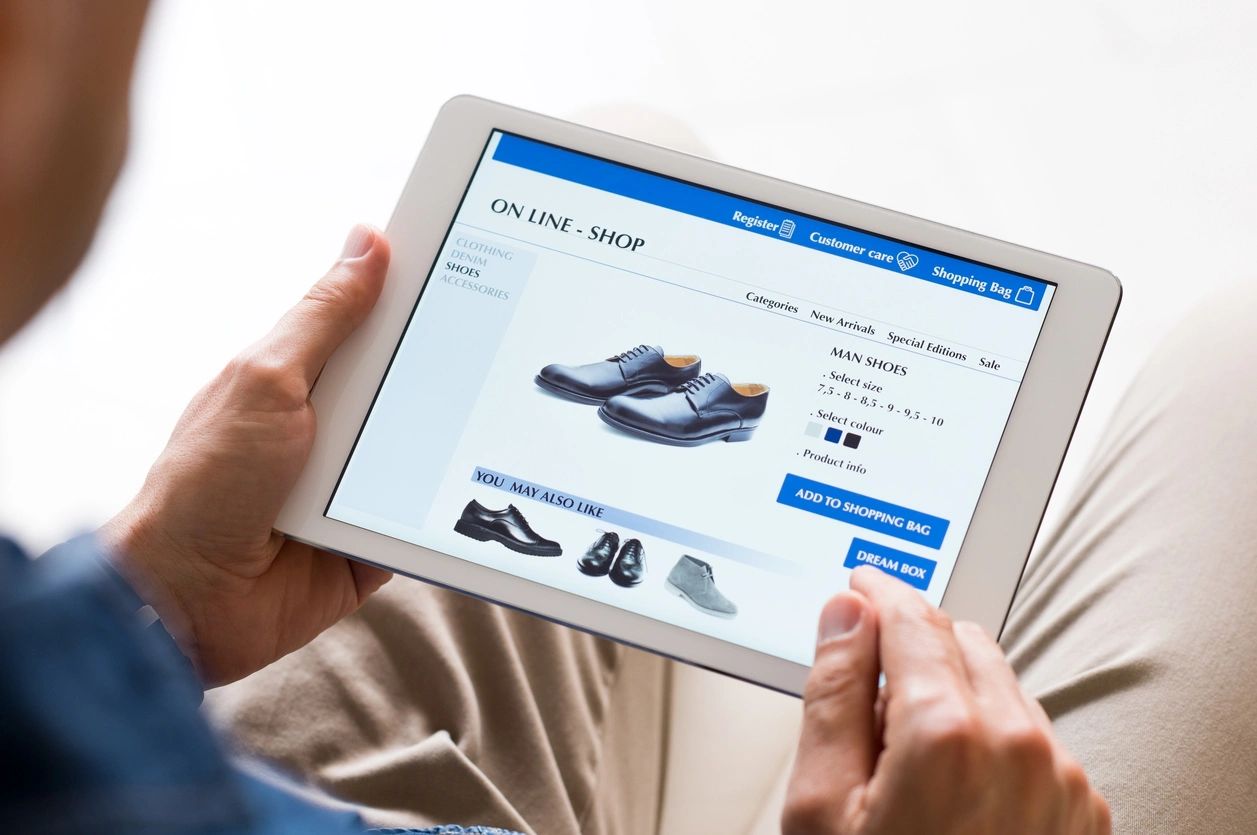In today’s digital marketplace, where competition is fierce and customer attention spans are short, having a well-designed Amazon Storefront is essential. Your Amazon Storefront serves as a dedicated space where customers can explore your brand and products in a more engaging and personalized way than on standard product detail pages. However, simply having a storefront isn’t enough—you need to ensure that it’s optimized for user experience to maximize conversions and build lasting customer relationships. In this blog, we’ll explore key design tips for improving your Amazon Storefront, thereby creating a seamless and enjoyable shopping experience for your customers.
Why Amazon Storefront Design Matters
Before diving into specific design tips, it’s important to understand why Amazon Storefront design matters so much. The layout, visuals, and navigation of your storefront play a significant role in how customers perceive your brand and whether they decide to make a purchase.
Amazon Storefront Design is not just about aesthetics—it’s about functionality, usability, and how effectively you can guide customers through their shopping journey. Moreover, a well-designed storefront can:
- Increase Brand Awareness: A customized storefront allows you to showcase your brand’s identity, values, and unique selling points. This helps build brand recognition and trust, making customers more likely to purchase from you.
- Enhance User Experience: Good design makes it easy for customers to find what they’re looking for. A storefront with intuitive navigation and clear product categories can significantly improve the user experience, which often leads to higher conversion rates.
- Boost Sales: By highlighting your best-selling products, promotions, and special offers in a visually appealing way, you can drive more sales. A well-structured storefront encourages customers to explore more products and make additional purchases.
- Differentiate from Competitors and Competitor Ads: In a crowded marketplace like Amazon, your storefront design can set you apart from competitors. A unique and engaging storefront can make a lasting impression on customers, thereby giving you an edge over other sellers.
Key Design Tips for Improving Your Amazon Storefront
Now that we’ve established the importance of Amazon Storefront Design, let’s delve into the key tips that can help you create a better user experience and maximize your storefront’s effectiveness.
1. Focus on a Clear and Cohesive Brand Identity
Your Amazon Storefront is an extension of your brand, so it’s crucial to maintain a clear and cohesive brand identity throughout. This includes using consistent colors, fonts, and imagery that align with your brand’s overall aesthetic.
- Logo and Branding: Ensure that your logo is prominently displayed on your storefront. This reinforces brand recognition and gives your storefront a professional appearance. Furthermore, use colors and fonts that are consistent with your website, packaging, and other marketing materials.
- Imagery: High-quality images are essential for creating a visually appealing storefront. Use lifestyle images that show your products in use, as well as close-up shots that highlight key features. All images should be professionally taken and consistent in style.
- Messaging: Your brand’s voice should be evident in the copy used throughout your storefront. Whether your brand is fun and quirky or professional and authoritative, your messaging should reflect that identity. This consistency helps build trust and reinforces your brand’s personality.
2. Optimize Your Storefront Layout for Easy Navigation
A well-organized layout is critical to providing a good user experience. Customers should be able to navigate your storefront easily and find the products they’re interested in without frustration.
- Product Categories: Group your products into clear and logical categories. This makes it easier for customers to browse and find what they’re looking for. For example, if you sell kitchen appliances, you might have categories like “Blenders,” “Coffee Makers,” and “Toasters.”
- Navigation Menu: Include a navigation menu at the top of your storefront that allows customers to jump directly to different sections, such as specific product categories or promotional pages. A well-organized menu can significantly improve the shopping experience.
- Homepage Layout: The homepage of your storefront should feature your best-selling products, new arrivals, and any special promotions. Therefore, use a combination of banners, product grids, and featured sections to create a dynamic and engaging homepage that encourages exploration.
- To first establish a good foundation, go to our How to Build a Successful Amazon Store: Best Practices and Common Mistakes blog to get started.
3. Use Engaging and Informative Content
Content is key to keeping customers engaged and informed as they browse your storefront. The right mix of images, videos, and copy can make a big difference in how customers perceive your brand and products.
- Product Descriptions: Ensure that your product descriptions are detailed and informative. Moreover, highlight key features, benefits, and use cases for each product. Bullet points can make it easier for customers to skim through important information.
- Videos: Incorporate product videos wherever possible. Videos can demonstrate how a product works, showcase its features, and provide a more comprehensive view than images alone. As a result, this can help customers feel more confident in their purchasing decisions.
- Customer Reviews: Highlight customer reviews and testimonials on your storefront. Social proof is a powerful motivator, and seeing positive feedback from other customers can encourage new visitors to make a purchase.
4. Highlight Promotions and Special Offers
Promotions and special offers are an effective way to drive sales, and your Amazon Storefront should prominently feature any ongoing deals. This not only attracts bargain hunters but also encourages impulse buys.
- Banners: Use eye-catching banners to promote sales, discounts, and limited-time offers. Place these banners at the top of your storefront or within relevant product categories to ensure maximum visibility.
- Bundles and Discounts: If you offer product bundles or discounts for purchasing multiple items, make sure these are highlighted on your storefront. Clearly communicate the savings customers can enjoy by purchasing together.
- Countdown Timers: If you’re running a time-sensitive promotion, consider using countdown timers to create a sense of urgency. Consequently, this can motivate customers to make a purchase before the deal expires.
5. Test and Optimize Your Storefront Regularly
Like any other aspect of your online business, your Amazon Storefront should be regularly tested and optimized to ensure it’s performing at its best. Use data and customer feedback to identify areas for improvement.
- A/B Testing: Experiment with different layouts, images, and messaging to see what resonates most with your audience. A/B testing allows you to compare different versions of your storefront to determine which one drives better results.
- Analytics: Use Amazon’s Store Insights to track key metrics such as page views, sales, and conversion rates. This data can help you understand how customers are interacting with your storefront and identify areas where improvements can be made.
- Customer Feedback: Pay attention to customer reviews and feedback. If customers are frequently asking the same questions or mentioning the same issues, it may be a sign that certain information is missing or unclear on your storefront.
- For personalized help to optimize these features, go to Amazon Reporting Dashboard to see all.
6. Ensure Mobile Optimization
A significant portion of Amazon shoppers browse and make purchases on their mobile devices, so it’s crucial that your storefront is optimized for mobile. A poorly optimized mobile storefront can lead to a frustrating user experience and lost sales.
- Responsive Design: Ensure that your storefront layout is responsive and adapts well to different screen sizes. This means that images, text, and buttons should all be easily viewable and clickable on a smaller screen.
- Mobile-Friendly Navigation: Simplify your navigation for mobile users. For instance, use dropdown menus or hamburger menus to keep the design clean and easy to navigate on smaller screens.
- Fast Loading Times: Mobile users expect fast loading times, so make sure your storefront is optimized for speed. Compress images and minimize the use of heavy scripts to ensure quick page loads.
7. Leverage Amazon’s Enhanced Brand Content (EBC)
If you’re a registered brand on Amazon, take advantage of Enhanced Brand Content (EBC) to elevate your product detail pages. EBC allows you to Create A+ Content for Amazon like enhanced images, text placements, and comparison charts to your product listings.
- Enhanced Images: Use EBC to add high-quality images that showcase your product from multiple angles or in different settings. This can provide a more comprehensive view and help customers better understand the product.
- Comparison Charts: Include comparison charts that highlight the differences between your product and others in your line. This helps customers make informed decisions and reinforces the unique selling points of your products.
- Brand Storytelling: Use the additional space provided by EBC to tell your brand’s story. Share the history of your brand, your mission, and what sets you apart from competitors. This adds a personal touch and can create a stronger connection with your customers.
Conclusion
Improving your Amazon Storefront design is crucial for providing a better user experience. Increasing conversions, and building a strong brand presence on Amazon. By focusing on a clear and cohesive brand identity, optimizing your storefront layout, using engaging content to buid brand. In addition, highlighting promotions, testing regularly, ensuring mobile optimization, and leveraging Enhanced Brand Content, you can create a storefront that not only attracts customers but also keeps them coming back.
Investing time and effort into your Amazon Storefront Design can pay off significantly. In the forms of higher sales, better customer retention, and a stronger brand reputation. As the e-commerce landscape continues to evolve, having a well-designed and user-friendly storefront will be key. Especially to staying competitive and achieving long-term success on Amazon.


Comments are closed